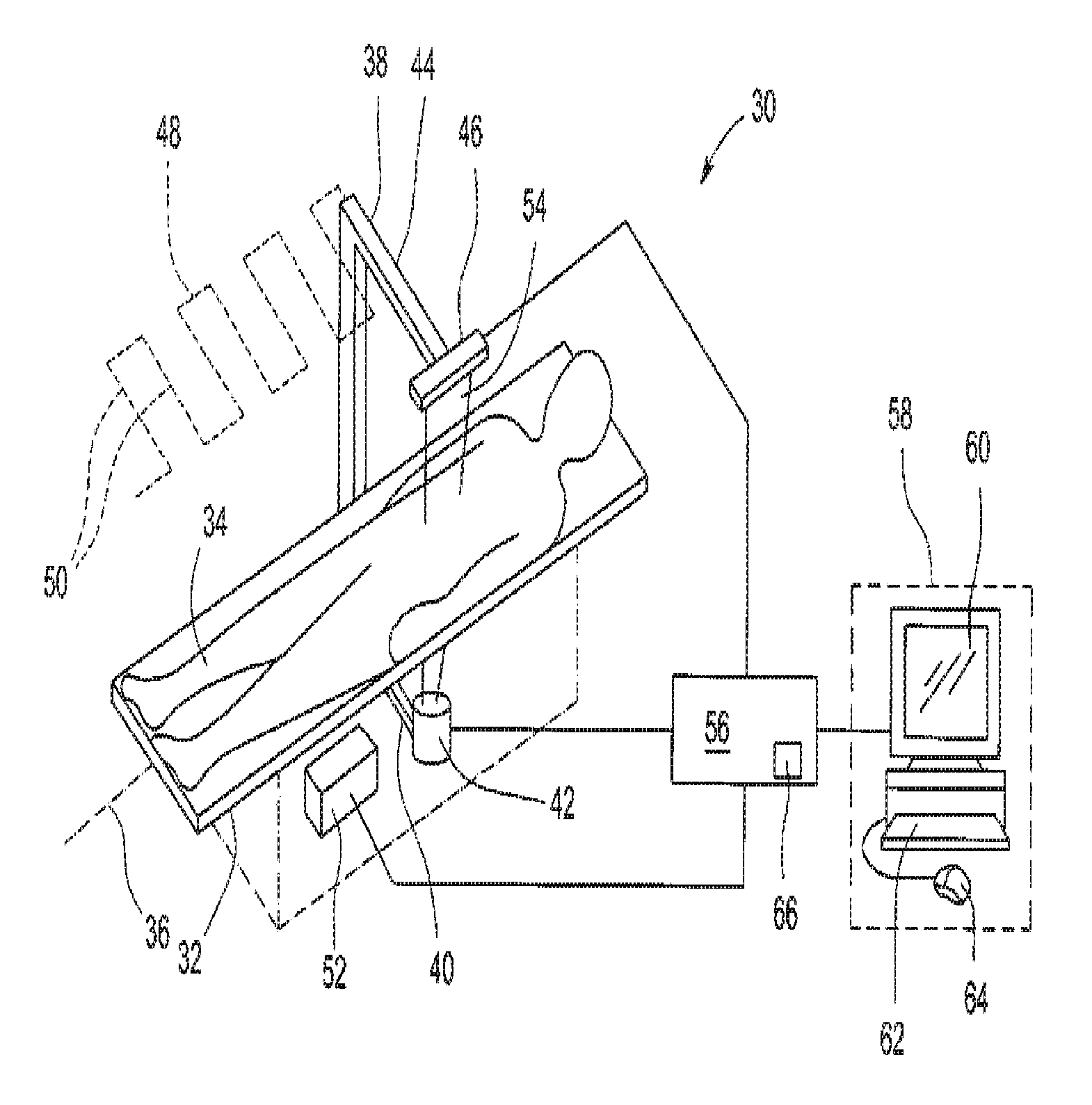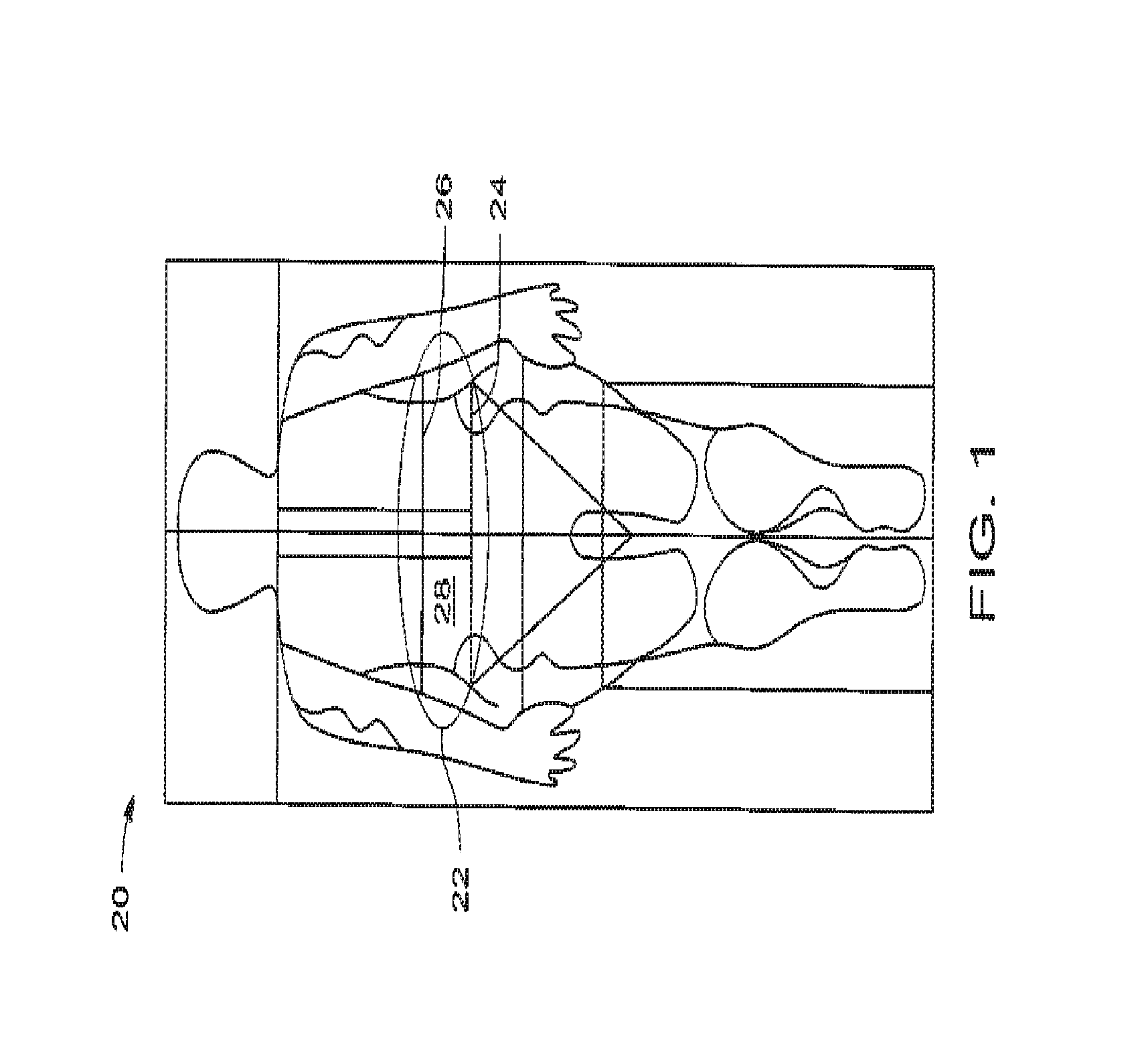Normalized metrics for visceral adipose tissue mass and volume estimation
a visceral adipose tissue and volume estimation technology, applied in the field of normalized metrics for visceral adipose tissue mass and volume estimation, can solve the problems of inaccurate comparison between examinations, difficult reproducibility, and often inability of devices to provide accurate vat measurements
- Summary
- Abstract
- Description
- Claims
- Application Information
AI Technical Summary
Benefits of technology
Problems solved by technology
Method used
Image
Examples
Embodiment Construction
[0030]Exemplary embodiments of imaging methods and systems for scanning subjects to obtain tissue information, particularly soft tissue composition information and soft tissue thickness information, for providing and displaying visceral adipose tissue (VAT) information, are described in detail below. Different methods, systems, apparatus and models are used to measure the VAT of a subject in different regions of the subject's body.
[0031]Referring now to the drawings, FIG. 1 illustrates a diagram of an exemplary embodiment of a dual-energy X-ray image 20 of a subject identifying a region of interest, such as an abdominal region of interest 22 to determine a VAT estimate of the subject. In particular, FIG. 1 is a full body dual-energy X-ray image 20 of a subject that may be generated from a scan of the entire body of the subject using a dual-energy X-ray absorptiometry (DXA) imaging system. The illustrated dual-energy X-ray image 20 is a dual-energy soft tissue image. The image 20 is ...
PUM
 Login to View More
Login to View More Abstract
Description
Claims
Application Information
 Login to View More
Login to View More - R&D
- Intellectual Property
- Life Sciences
- Materials
- Tech Scout
- Unparalleled Data Quality
- Higher Quality Content
- 60% Fewer Hallucinations
Browse by: Latest US Patents, China's latest patents, Technical Efficacy Thesaurus, Application Domain, Technology Topic, Popular Technical Reports.
© 2025 PatSnap. All rights reserved.Legal|Privacy policy|Modern Slavery Act Transparency Statement|Sitemap|About US| Contact US: help@patsnap.com



